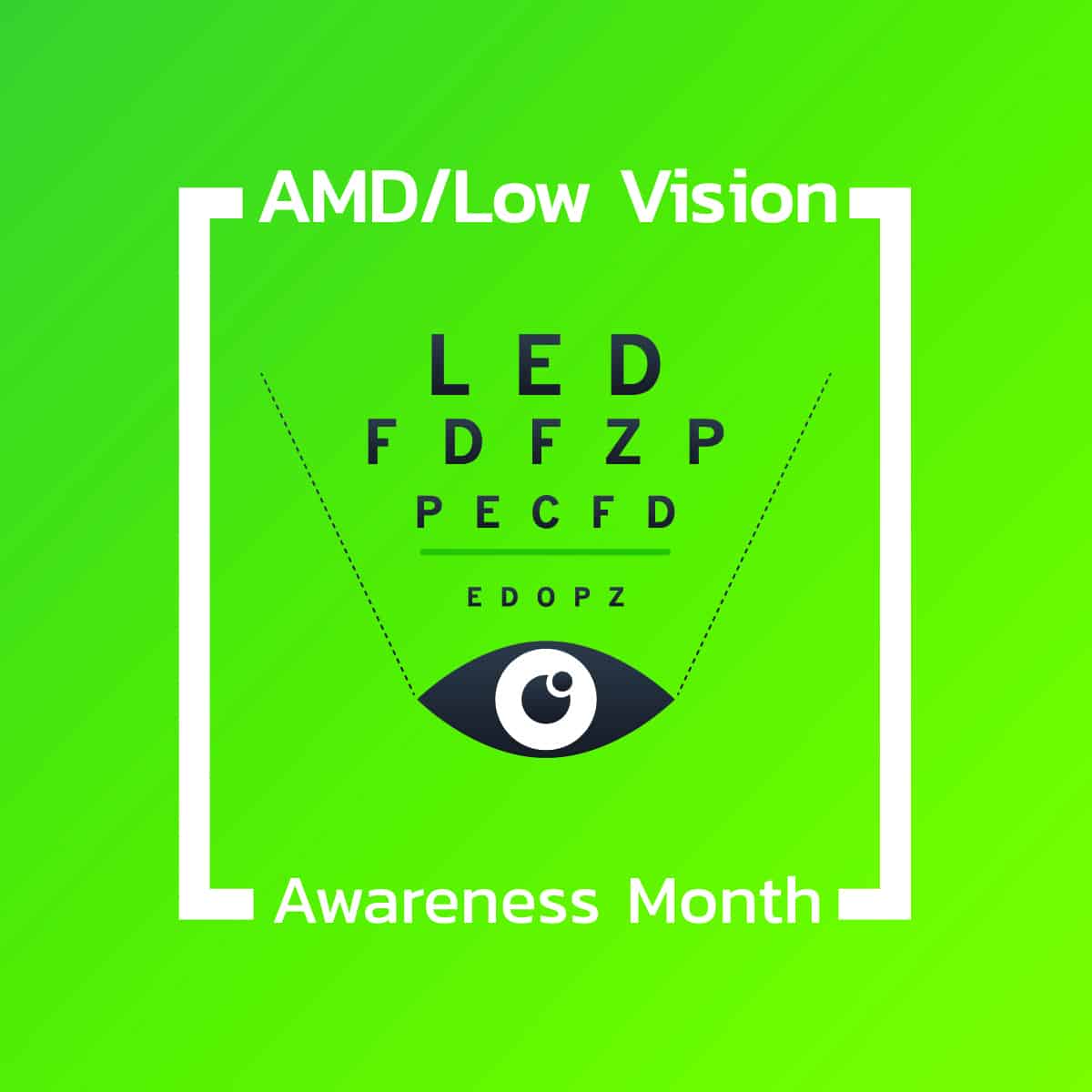
February is another awareness month for vision problems, focusing on age-related macular degeneration (ARMD) and low vision. ARMD is one of the leading causes of vision loss in people over age 50. One of the hallmark signs of ARMD is black spots in your field of vision. If you experience this symptom, it’s not a normal part of aging and warrants a visit to Austin Eye for a comprehensive eye exam.
Low vision affects an estimated 2.9 million Americans, according to the American Academy of Ophthalmology. Low vision involves visual impairment that can’t be corrected with contact lenses, eyeglasses, medication or surgery, including the damage caused by ARMD. Our eye doctors want you to understand how ARMD affects everyday life and leads to vision loss.
What Is ARMD?
ARMD affects your central vision and can cause black or blank spots to appear whenever you look directly at an object or person. Good central vision is necessary to accomplish everyday tasks, such as reading, driving and recognizing faces. ARMD steals your ability to do these activities and enjoy a loved one’s smile.
There are two types of ARMD: wet and dry. Dry ARMD progresses slowly, occurring when drusen (yellowish deposits) develop underneath the light-sensitive tissue at the back of the eye (retina). Advanced dry ARMD, also called geographic atrophy, causes those blind spots in your central vision. Dry ARMD is responsible for about 80% of cases.
Wet ARMD causes rapid and progressive vision impairment due to the formation of tiny, new blood vessels that grow into and under the retina. These fragile vessels break and leak, causing significant vision loss.
How Is ARMD Diagnosed?
This eye disease is diagnosed during a comprehensive eye exam involving a complete medical history, visual acuity test, pupil dilation, Amsler grid and fluorescein angiography. An Amsler grid is a sheet of paper with grid lines that help identify missing or wavy areas in your field of vision. Fluorescein angiography is a test that injects a special dye into the arm and takes pictures as the dye goes through the retinal blood vessels to determine if they are leaking.
While there is no cure for ARMD, early diagnosis and treatment can slow vision loss. Raising awareness about this eye disease in February can help save a loved one’s vision by understanding the risk factors and treatment options and scheduling an eye exam to investigate warning signs.
ARMD Risk Factors and Symptoms
Understanding your family history and leading a healthy lifestyle are essential to maintaining good eye health and vision. Age-related macular degeneration typically affects people 50 and older with a history of smoking, high blood pressure, hypertension or a poor diet with a lot of saturated fat. ARMD tends to run in families, especially among people of Asian or European descent.
Symptoms of ARMD include:
- Fuzzy or blurry vision
- Difficulty recognizing faces
- Seeing straight lines as wavy
- Blind, black or empty spots in your central vision
- Central vision loss that impacts daily tasks and quality of life
Our eye doctors may have you test your vision regularly at home with an Amsler grid to identify changes in your vision caused by ARMD.
Treatments for ARMD
Treatment for macular degeneration depends on your medical history, age, overall health and the type and severity of the disease. There are no treatments for dry ARMD, but low-vision devices may help you develop visual skills to improve daily life. Wet ARMD is often treated with anti-VEGF (vascular endothelial growth factor) medications to reduce leaky, abnormal blood vessels and their effects.
If you or a loved one is experiencing black or blank spots in their field of vision, contact our ophthalmologists at Austin Eye to schedule an eye exam and consultation. Call our Northwest and Westlake offices in Austin, Texas, at (512) 250-2020 or fill out our online contact form.







